UNION OF SOVIET SOCIALIST REPUBLICS
RUSSIAN SWASTIKAS & SALUTES
How Stalin, Mao & Hitler and the USSR & PRC
& NSDAP were influenced by socialists in the
USA, the Pledge Of Allegiance etc.,
Swastikas, Red Stars, Hammer and
Sickle http://rexcurry.net/swastika4.gif
The Swastika's two crossed S-letters stand for "Soviet Socialist."
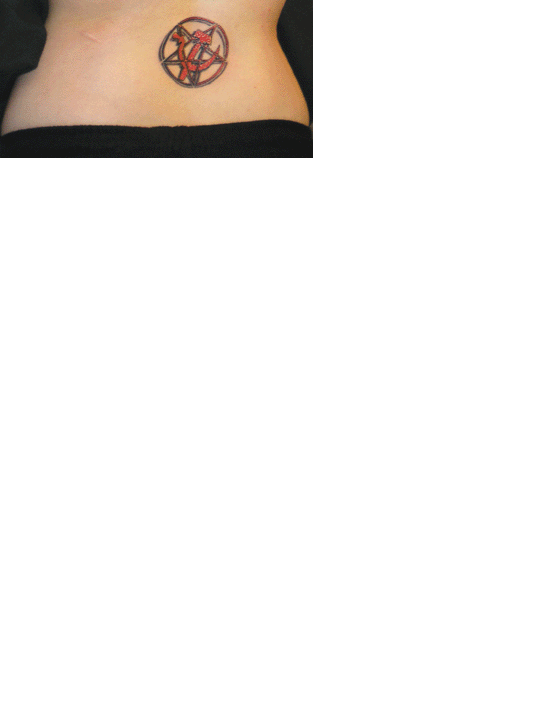
|
|
The USA's Pledge of Allegiance (& the military
salute) was the origin of Adolf Hitler's "Nazi" salute under the National
Socialist German Workers Party (Nazis). http://rexcurry.net/pledge2.html
The swastika
was used by the military and by socialists in the USA and in the USSR,
before it was used by the National Socialist German Workers Party (NSDAP).
http://rexcurry.net/45th-infantry-division-swastika-sooner-soldiers.html
|
^ Hammer
and Sickle Tattoos of the USSR and
Soviet Socialist Swastikas are related to tattoo
topics in the USSA (United Socialist States of America) http://rexcurry.net/tattoos.html
|
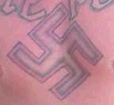
|
Soviet Socialist Swastikas are scary
reminders of similar symbolism under the National Socialist German
Workers Party. The swastika, although
an ancient symbol, was also used to represent "S" letters joined
for "socialism" under the German National Socialism (Nazis), similar
to the alphabetical symbolism for the SS Division, the SA, the NSV,
and the VW logo (the letters "V" and "W" joined for "Volkswagen").
http://rexcurry.net/bookchapter4a1a2a1.html
|
Francis Bellamy & Edward Bellamy touted National
Socialism and the police state in the USA decades before their dogma
was exported to Soviet Socialists. They influenced the USSR, its dogma,
symbols and rituals. http://rexcurry.net/police-state.html
and http://www.youtube.com/watch?v=BssWWZ3XEe4
|
LEARN HOW AMERICAN GIRL SCOUTS & SCOUTING
SPREAD THE NAZI SALUTE & SWASTIKA
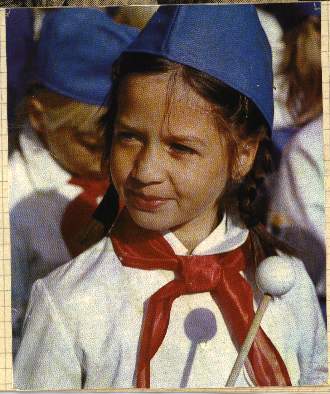
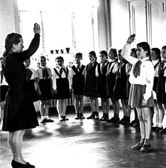

PHOTOS 1 http://rexcurry.net/pledge2.html
2 http://rexcurry.net/pledge-of-allegiance-images.html
3 http://rexcurry.net/pledging-allegiance-photographs.html
4 http://rexcurry.net/saying-the-pledge-of-allegiance-pictures.html
5 http://rexcurry.net/pledge_military.html
6 http://rexcurry.net/ussr-socialist-swastika-cccp-sssr.html
7 http://rexcurry.net/bellamy-edward-emiliano-zapata-mexico-socialism.html
|
|
|
Oppose the National Socialist
German Workers' Party and its socialist legacies
that exist in today's government.
For more information regarding Nazi policies in the
USA see http://rexcurry.net/police-state.html |

A lot of fascinating research examines how socialists
and their propaganda have haunted the world.
Many authors worry today about a future filled with
persecution and global socialism. Those worries find relevance
in the enormous size and scope of government worldwide.
After 1917, socialism was imposed in Russia
when the former Union of Soviet Socialist Republics
(USSR) was formed after the Russian Revolution of 1917,
and the Russian Civil War of 1918-1920. The propaganda
machinary introduced a new symbol for the new government:
the swastika.
http://rexcurry.net/ussr-socialist-swastika-cccp-sssr.html
The Soviet swastika was
so popular that paper money printed with the dates 1917
and 1918 carried large swastikas in the center of the
bills (on denominations of 250, 1000, 5000, & 10,000). Three of
the denominations bore three separate swastikas across the front (the
250 denomination bore one swastika). The Soviet swastika notes continued
to be issued after the 1917 revolution(s). http://rexcurry.net/ussr-socialist-swastika1917-1000b.JPG
In 1919, the same 250 ruble
note that had carried the swastika carried at
the very top of the soviet socialist bill the phrase "Proletarier
aller Länder vereinigt Euch" in the German language
and in English (Workers' of the world unite!") and in other
languages. The USSR was actively and openly spreading
socialism in Germany (and globally) and using non-russian languages
to do so: German, English, and other languages that use the "S" letter
for words like "Soviet" and "Socialist." The 250 ruble note also contained
Soviet Socialism's new version of the soviet swastika: the
hammer and sickle. http://rexcurry.net/swastika4.gif
A similar
fad grew in Germany, where the swastika symbol was popular
with socialists and became the sign of the National
Socialist German Workers' Party (NSGWP). At the
turn of 1918-19, and unmentioned in "Mein Kampf," Hitler wore a red brassard
and supported the short-lived Bavarian Soviet Republic, according to Thomas
Weber in the book "Hitler's First War" (Oxford University Press, 450 pages,
$34.95).
The double-S symbol of the swastika was used
as a socialist symbol for an alternative to the widespread
symbol for capitalism and capitalist money (the dollar sign or
"$"). http://rexcurry.net/socialisthate.html
Although the swastika
was an ancient symbol, the USSR and Germany followed
the lead of socialists in the USA in using the swastika
as a symbol for socialism. http://rexcurry.net/theosophy-madame-blavatsky-theosophical-society.html
Joseph Goebbels, future Propaganda Minister for Germany's National Socialism,
compared Lenin to Hitler in a favorable light as late as 1925 according
to a New York Times article printed in that year.
Soviet Socialists and German
Socialists also saw that the swastika was adopted by American
soldiers in the 45th Infantry Division and in the Escadrille
Lafayette Americaine during World War I and adorned American
soldiers' shoulder patches, flags and planes used in the fight
against Germany. http://rexcurry.net/45th-infantry-division-swastika-sooner-soldiers.html
The swastika was also on American cars (e.g. the Krit Motor Car Company
of Detroit) long before it was used under Soviet socialism or German socialism
(i.e. German cars and the Volkswagen VW). Was the Krit logo the design
inspiration for the hakenkreuz under the NSGWP? http://rexcurry.net/krit_motor_car_company_detroit.html
Through the work of socialists
in the USA, the USSR, and Germany respectively,
the swastika became a global symbol of socialism.
At the time that the Soviet swastika began, there existed
the Petrograd Soviet of Workers' and Soldiers' Deputies, usually called
the Petrograd Soviet. It was the soviet (workers' council) in Petrograd
(Saint Petersburg), Russia established in March 1917. A workers'
soviet had been created in Saint Petersburg (the name for Petrograd
before the First World War had begun) in 1905 (the St Petersburg Soviet).
This was a group of workers and soldiers who had formed in 1917. Soviets
were rather like councils. Thus the "Soviet socialist" concept existed
at the time that the crossed S-letters of the Soviet Swastika were used
in Russia. The Swastika's two crossed S-letters symbolized "Soviet Socialism."
That concept eventually evolved into the Union of Soviet Socialist Republics.
Eventually, Soviet socialists switched from the swastika
to the hammer and sickle. The hammer and sickle resembles
the earlier Soviet swastika flipped horizontally.
The USSR's hammer and sickle might have been intended as a
visual reminder of the Russian version of its own earlier
swastika.
The swastika flag under German National Socialism
was influenced by the Soviet swastika and by the hammer
and sickle of Soviet socialism. The swastika of German
socialists and the hammer and sickle of Soviet socialists
have visual similarity. Each symbol resembles the other symbol
pointing in the opposite direction.
In the same way that
the swastika was two "S" letters crossed to represent
socialists joining together, the hammer and the sickle
were crossed to represent workers joining with peasants, or
factory workers joining with agricultural workers.
At that time, the swastika
was also a symbol of "superior society" or the "super
society of socialism" for the new "super socialist man" in
the New World Order (NWO). To learn more see George Bernard
Shaw "Man and Superman" (1903), read about his visit with Stalin
(the socialist tsar / czar) in the 1930s, and consider this quote
from his letter to Henry James of 17 January 1909: "I, as a Socialist,
have had to preach, as much as anyone, the enormous power of the
environment. We can change it; we must change it; there is absolutely
no other sense in life than the task of changing it. What is the use
of writing plays, what is the use of writing anything, if there is
not a will which finally moulds chaos itself into a race of gods."
Having visited the USSR in 1930s, Shaw became an ardent supporter
of Stalin and Soviet Socialism. After being duped by a carefully
managed tour of the country, Shaw declared all the stories of the
socialist Wholecaust were slander. In private, Stalin disparaged
Shaw. Shaw was asked why he did not want to stay permanently in
the "earthly paradise" of the Soviet Super Society.
The
Soviet swastika was unusual to most swastikas (but
the same as the German swastika) due to these features:
it was 45 degrees to the horizontal (in a diamond
shape), it was pointed clockwise, it was squared at its corners,
and it was proportionally the same as the swastika used
later by German National Socialists. Swastikas can point
either way and are often flat on one side. The Soviet swastika
and the German swastika were the same swastika. The swastika
had been used by socialist groups in Germany before 1917, however
the earlier use was never the same as the Soviet swastika,
and the symbol was almost always flat on one side and likely to
point in either direction. When German National Socialists altered
their swastika it occurred after the debut of the Soviet swastika
in 1917. The definitive version of the swastika under German National
Socialism (e.g. the version on the flag) was inspired by the
Soviet swastika.
The Soviet swastika's unusual orientation emphasizes
the appearance of alphabetic "S" lettering.
Although the swastika was an ancient symbol, the historian
Dr. Rex Curry (author of "Swastika Secrets") discovered
that it was also used sometimes by German National
Socialists to represent "S" letters for their "socialism."
The leader of German National Socialism rotated the symbol
45 degrees and had newer uses oriented clockwise. Adolf Hitler
altered his own signature to use the same symbolism, and similar
alphabetic symbolism still shows on Volkswagens. http://rexcurry.net/book1a1contents-swastika.html
The
NSGWP's use of the swastika as "S" letters in alphabetic
symbolism for "Socialism" was inspired by the Soviet
swastika. The USSR's swastika was seen as a union of
"S" letters for "Soviet Socialist" as in the "Union of
Soviet Socialist Republics" (In German: "Union der Sozialistischen
Sowjetrepubliken"). After the swastika became the symbol
of German National Socialists, the symbol was altered to
represent intertwined "S" letters for "Sieg Socialism" (Socialist
Victory) or "Socialist Solidarity" or representing socialists
from different groups joining together under the NSGWP (especially
after other groups were banned in another example of German socialists
copying Soviet socialists).
If the acronym "USSR" used a swastika to replace the
two "S" letters, then it would illustrate the symbolism
of the Soviet swastika, similar to how it appeared
in the center of paper currency under Soviet socialism.
In 1917, some Soviet Socialists might have interpreted
the symbol more generally as "Soviet Socialists" or "Union
of Soviets" or "Union of Socialists" ("Sovetskikh Sotsialisticheskikh"
or "Soyuz Sovetskikh" or "Soyuz Sotsialisticheskikh" from "Soyuz
Sovetskikh Sotsialisticheskikh Respublik" or SSSR).
German National Socialists and Soviet Socialists have
a history of aping each other. The flag color
for German National Socialists was influenced by Soviet
Socialists.
Even
after WWII, Soviet Socialists adopted the swastika
style symbolism of the German Trabant Sachsenring
car. http://rexcurry.net/trabant-sachsenring-rex-curry.html
One country mimicked the other in the adoption of
the salutes that they imposed on their civilians, and
both countries mimicked the United States (the origin of
their salutes). Dr. Rex Curry showed that the USA's early
Pledge of Allegiance (to the flag) used an extended-arm
salute and it was the origin of the salute of the German National
Socialists and Soviet Socialists. Francis Bellamy created
the pledge to the USA's flag, and he was a self-proclaimed
socialist in the nationalism movement in the USA. The USA's
original pledge began with a military salute that then stretched
out toward the flag. Dr. Curry showed that, due to the way
that both gestures were used sequentially in the pledge, the
military salute led to the salute adopted later by German Socialists
and Soviet Socialists. Their salutes are extended military
salutes via the USA's pledge. http://rexcurry.net/book1a1contents-pledge.html
Bellamy's original pledge stated that the palm should
be turned upward with the arm gracefully curved
upward. In actual practice in the USA, the second
part of the gesture was performed with a straight arm and
palm down by children who merely extended the military salute
while perfunctorily performing the forced ritual chanting.
That was the origin of the hard stylized salute adopted
later by German National Socialists. See the video documentary at
http://www.youtube.com/watch?v=BssWWZ3XEe4
The Soviet socialist salute is arguably closer to Bellamy's
first description of the Bellamy salute because in
the USSR the arm is in more of a military salute position, and maintained
in a curved position as if the American salute was
started but not completed. Soviet socialists then followed
the American practice of not turning the palm upward. http://rexcurry.net/ussr-cccp-sssr-young-pioneers-salute1.jpg
Videos can be viewed on the web (e.g. Youtube) of Soviet socialist
children performing the gesture and worshipping flags in the manner adopted
from the USA. The videos can be found under searches for "Soviet Pioneer
Song: May There Always Be Sunshine" (Russian song name: "Пусть всегда будет
солнце"
Official song name: "Солнечный круг") and the Young Pioneers organization.
Also search for these terms in youtube for other examples: flag
raising china.
http://rexcurry.net/red-swastika-society-china-socialism.html
http://www.youtube.com/watch?v=H3LBkr7W-Io&feature=related
http://www.youtube.com/watch?v=qELaz7R9UgU&feature=related
http://www.youtube.com/watch?v=X-rOcmmVyXo&feature=related
http://www.youtube.com/watch?v=KHgEG-PtbLY&feature=fvw
http://www.youtube.com/watch?v=JEZkU3TK8R0&feature=related
http://www.youtube.com/watch?v=-SINuTOD2x8&feature=related
http://www.youtube.com/watch?v=TJw9sKg4Z_0&feature=related
The USA had been performing Bellamy's socialist chanting, military
salutes/nazi-salutes, and flag worship for about three decades (from 1892)
before Young Pioneers under Soviet socialism adopted the America's bad
habits. The Young Pioneer Organization of the Soviet Union (Всесою́зная
пионе́рская организа́ция и́мени) began in 1922. It was a mass youth organization
of the USSR for children of age 10-15 in the Soviet Union between 1922 and
1991.
http://rexcurry.net/pledge2.html
The National
Socialist German Workers’ Party began in 1920,
gained electoral breakthroughs in 1930, dictatorship
in 1933, and in 1939 it joined as allies with the Union
of Soviet Socialist Republics to invade Poland in a Pact
to divide up Europe, spreading WWII. http://rexcurry.net/socialists.html
They USSR embraced the
swastika symbol even more then, and the hammer and sickle
was displayed proudly next to and in partnership with the socialist
swastika.
The dogma
of socialists in the United States, Germany, Russia
and elsewhere led to the socialist Wholecaust (of which
the Holocaust was a part): ~60 million slaughtered
under the Union of Soviet Socialist Republics; ~50 million
under the Peoples' Republic of China; ~20 million under
the National Socialist German Workers' Party. http://rexcurry.net/socialists.jpg
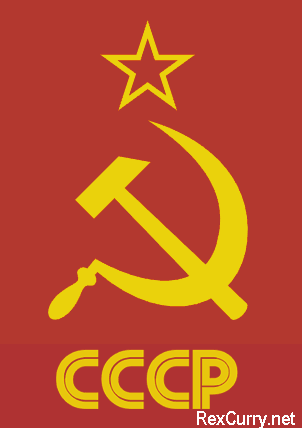
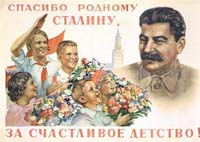
In the book "The Americans: 1587-1914" by Joseph
Chamberlain Furnas (1969) page 726 it references Edward
Bellamy with: "Gorky classed Bellamy with Henry George and
Jack London as American influences important among Russian radicals."
Sylvia Bowman says of the book she edited "Edward Bellamy Abroad: An American
Prophet's Influence" (containing material from various contributors) the
following: "Perhaps the most interesting recital of the popularity and influence
of Bellamy's ideas is that of his reception and use in Russia before the 1917
Revolution." Edward Bellamy (1850-1898). Sylvia E. Bowman American Literary
Realism, 1870-1910, Vol. 1, No. 1 (Fall, 1967), pp. 7-12 (article consists
of 6 pages), Published by: University of Illinois Press, Stable URL: http://www.jstor.org/stable/27747554.
Also cited in that article is Everett W. MacNair's "Edward Bellamy and the
Nationalist Movement, 1889-1894 (Milwaukee: Fitzgerald, 1957).
***************
Alfred
Rosenberg was another notorious socialist who was
active in Russia (in 1917) and in Germany (in the
National Socialist German Workers' Party). The noted
historian Dr. Rex Curry has suggested that this may
have been the inspiration behind the adoption of the swastika
as alphabetic symbolism for "socialism" by the National
Socialist German Workers' Party.
Rosenberg was born to Baltic German parents in Reval
(Tallinn) Estonia, then part of the Russian Empire.
He studied architecture at the Riga Polyechnical Institute
and engineering at Moscow University, completing
his Ph.D. studies in 1917.
After the Russian Revolution of 1917, he emigrated
to Germany (in 1918) along with his friend Max Scheubner-Richter.
Rosenberg was one of the earliest (January 1919)
members of the German Workers Party and it became the National
Socialist German Workers Party and adopted the swastika
as its symbol and used the symbol to represent "S" letters
for "socialist." In 1921, Rosenberg became editor of the
Völkischer Beobachter ("Folkish Observer"), the newspaper
of the National Socialists.
Rosenberg also became a member of the Thule Society,
founded August 17, 1918. Rosenberg and Thule
Society touted oddball ideas about socialism, universal
brotherhood, and the Aryan race that were all borrowed
from the notorious socialist and occultist Madame Blavatsky
and her Theosophical Society, formed in New York in
1875. The Thule Society used a swastika as its symbol,
however the Thule swastika was not the same swastika used
by German National Socialists. The swastika used by German
National Socialists was the same swastika that had been
used for forty years by Madame Blavatsky as a symbol for her
utopian "socialist society." http://rexcurry.net/theosophy-madame-blavatsky-theosophical-society.html
Thule Society members maintained close contacts with
followers of Theosophy and the followers of Helena
Blavatsky. It is also interesting to note that the
names of both groups had the same "TS" initials that the
Theosophical Society had used in its symbolism for decades.
************************
Vladimir Lenin (the first leader of the Union of Soviet
Socialist Republics) was fluent in German, English,
and other languages. Many educated Russians were
fluent in other languages.
Lenin is credited with translating Karl Marx's Manifesto
from German into Russian. Marx was German.
The book "Lenin - A New Biography," page 8. ISBN 0-02-933435-7
by Dimitri Volkogonov states that Lenin's antecedents
were Russian, German, Swedish, and others.
Lenin had previously lived in Munich, Germany and
in Vienna, Austria (Both cities were essentially
the hometowns of the leader of the National Socialist
German Workers' Party).
Lenin's
original name was not "Lenin." He adopted the pseudonym
"Lenin" in Germany. His previous name was: Vladimir
Ilyich Ulyanov. The name Lenin was acquired while
he was staying near Lehnin Abbey, in Brandenburg, Germany.
It is fascinating to note here another ominous
parallel with the life of the leader of German National Socialism
who resided at Lambach Abbey in Austria, and first saw the
swastika symbol on the Abbey's exterior decorations.
Lenin had been in Germany shortly before returning
to the USSR in 1917. He traveled throughout Germany
and Europe meeting other socialists and making plans.
Lenin collaborated with powerful socialist politicans
in Germany, including Rosa Luxemburg and Karl Liebknecht (They
are sometimes referred to as "The Three L's" for Lenin,
Luxemburg and Liebknecht). Another of the many socialist groups
that existed in Germany at that time was the German Workers'
Party, in existance since 1902, and later to become the
National Socialist German Workers' Party (Nationalsozialistische
Deutsche Arbeiterpartei in 1919. The leader of the NSGWP
had wanted to call the group the "Social Revolutionary Party").
Some of the many socialist groups were known as Freikorps
and they already used the swastika symbol in Germany (although
at that time the symbol was always flat on one side and likely
to point in either direction). On November 9, 1918, Liebknecht
declared the formation of a "Deutsche Freie Sozialistische
Republik" (German Free Socialist Republic). Some Freikorps
groups were used in aid of the new socialist provisional government
in Germany.
At
the time of the overthrow of Tsar Nicholas II (March
1917) at Petrograd in the 1917 February Revolution,
Vladimir Lenin was residing in Switzerland (during
WWI) but, with the aid of the German government, he was
able to return to Russia quickly. Fritz Platten, a swiss citizen,
made special arrangments with the German government
for Lenin and his company to travel through Germany by train.
Once past Germany, Lenin continued by ferry to Sweden, and the
rest of the trip through Scandinavia was arranged by Otto Grimlund
and Ture Nerman.
Back in his own Fatherland, Lenin was accused of
being a traitor and an agent of Germany by Aleksander
Kerensky and others. The Soviet swastika might
be more evidence that supports that accusation.
At the turn of 1918-19, and unmentioned in "Mein Kampf," Hitler wore a red
brassard and supported the short-lived Bavarian Soviet Republic, according
to Thomas Weber in the book "Hitler's First War" (Oxford University Press,
450 pages, $34.95).
There is probably something that is not mentioned in Weber' book: Perhaps
the Bavarian Soviet Republic experience played a role in the German National
Socialist leader adopting a swastika symbol that had been used by Soviet
socialists on currency with the dates 1917 and 1918.
http://rexcurry.net/ussr-socialist-swastika-cccp-sssr.html
See an image at http://rexcurry.net/ussr-socialist-swastika1917-1000b.JPG
Joseph Goebbels, future Propaganda Minister for Germany's National Socialism,
compared Lenin to Hitler in a favorable light as late as 1925 according
to a New York Times article printed in that year.
After murdering so many people, Lenin died (1924)
of complications years after a murder attempt (in
1918) by an assassin who accused him of being a traitor.
On August 30, 1918, Fanya Kaplan shot Lenin three times
and later explained that she considered Lenin a traitor, and
particularly so for Lenin's banning of other socialist
groups, including her group. She was a member of the Socialist
Revolutionary Party (It is interesting to note that the leader
of the NSGWP had originally wanted to call his party the
"Social Revolutionary Party"). An earlier (and possibly unrelated)
assassination attempt had occurred on January 14, 1918, when
gun shots had been fired at Lenin as he rode in a car with Fritz
Platten (the person who had arranged Germany's aid in returning
Lenin to Russia).
Lenin's dogma was the same dogma
that led to the socialist Wholecaust (of which
the Holocaust was a part): ~60 million slaughtered under
the Union of Soviet Socialist Republics; ~50 million under
the Peoples' Republic of China; ~20 million under
the National Socialist German Workers' Party.
Assassination is always risky because
the replacement might turn out to be as bad or worse
than the tyrant killed. Lenin was replaced by Stalin,
who shares with Lenin one of the worst records for mass slaughter
in the socialist Wholecaust.
A similar problem became evident
after the National Socialist German Workers' Party (and
its leader) was obliterated through the efforts of its
earlier ally, the Union of Soviet Socialist Repubics (and others).
Soviet Socialists went on to kill more than twice as many people
as had been killed by German National Socialists.
The USA had assisted Soviet Socialists
in defeating German Socialists, and then watched as Soviet
Socialists set new and more horrid records for genocide.
Mao was still alive after WWII,
and he and his fellow socialists went on to kill more
than twice as many people as had been killed by German National
Socialists.
Perhaps a reason that assassination
is rare is because civilians fear that their death-deserving
rulers will be replaced by a twin or worse.
************************
Vladimir Lenin returned to Russia through Germany
in April 1917. After his return, he and his supporters
used the slogan "All Power to the Soviets!"
It referred to creating totalitarian military socialism
by transferring current state power from the Provisional
Socialist Government to the workers' and soldiers' councils
known as "Soviets." The soldiers' councils sometimes
behaved as independent socialist militia groups similar to
the German Freikorps.
Lenin adopted military socialism and used the Military
Revolutionary Committee (and used soldiers' councils
or "soviets") to increase his power.
In September 1917, General Lavr Kornilov, the recently
appointed Commander-in-Chief of the Russian army,
denounced Lenin and his 'German spies,' and declared
that they should be hanged. He was dismissed from office
by Alexander Kerensky.
Lenin blocked the elected All Russian Constituent
Assembly (Vserossiyskoye Uchreditelnoye Sobranie)
from where it convened at Tauride Palace.
On 25 October 1917, Lenin's group initiated a military
coup and the overthrow (known as the October Revolution)
of the Provisional Government via the Petrograd Soviet
and the Military Revolutionary Committee. The overthrow
coincided with the convocation of the Second Congress of
Workers' and Soldiers' Soviets.
On October 26, Lenin closed any newspaper that criticized
him (For an account see Nikolai Sukhanov. The
Russian Revolution, 1917, Oxford University Press,
1955, pp.649-650).
The Socialist Revolutionary leadership increasingly
viewed Lenin’s government as a German proxy,
and moreso after the signing of the peace Treaty of Brest-Litovsk
by Lenin’s government on March 3, 1918.
Lenin supported imperialism. In the late 18th century,
the newly independent Second Polish Republic began
securing its eastern territories annexed by Russia in
the partitions of Poland. That was part of the Soviet socialist
excuse for the Polish-Soviet War in 1919. With the socialist
revolution in Germany, Lenin viewed that as the perfect time
and place to "probe Europe with the bayonets" of the Soviet
socialist army. Lenin saw Poland as the bridge that Soviet Socialists
would have to cross in order to link up with supporters in Germany's
socialist revolution, and to abet other socialist movements
in Western Europe. However the Polish-Soviet War did not go as
desired by Lenin and it delayed his plans. Lenin's imperialistic
plans were revived by his cohort and successor Stalin in cooperation
with the leader of the National Socialist German Workers Party.
In 1939, they joined as allies to invade Poland in a pact
to divide up Europe. WWII spread. It led to the socialist Wholecaust.
Swastika http://rexcurry.net/ussr-socialist-swastika1917-250b.JPG
Swastika
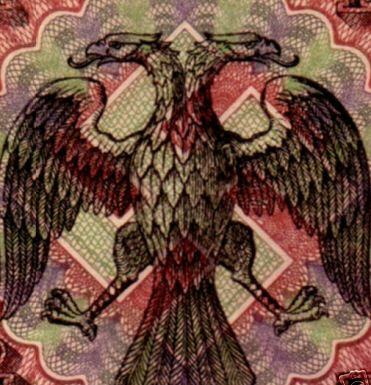
USSR Soviet Swastika http://rexcurry.net/ussr-socialist-swastika1917-250a.JPG
Swastika Russia Rubles currency money
At the turn of 1918-19, and unmentioned in "Mein Kampf," Hitler wore a red
brassard and supported the short-lived Bavarian Soviet Republic, according
to Thomas Weber in the book "Hitler's First War" (Oxford University Press,
450 pages, $34.95).
There is probably something that is not mentioned in Weber' book: Perhaps
the Bavarian Soviet Republic experience played a role in the German National
Socialist leader adopting a swastika symbol that had been used by Soviet
socialists on currency with the dates 1917 and 1918.
http://rexcurry.net/ussr-socialist-swastika-cccp-sssr.html
See an image at http://rexcurry.net/ussr-socialist-swastika1917-1000b.JPG
Although an ancient symbol, the swastika was used sometimes to represent
crossed S-letters for "socialism" under the National Socialist German Workers
Party, as shown by the historian Dr. Rex Curry, author of "Swastika Secrets."
http://rexcurry.net/book1a1contents-swastika.html
Joseph Goebbels, future Propaganda Minister for Germany's National Socialism,
compared Lenin to Hitler in a favorable light as late as 1925 according
to a New York Times article printed in that year.
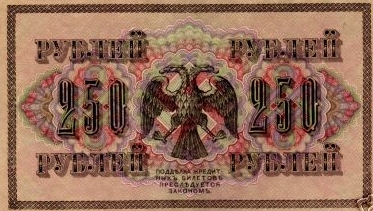
Mākslinieks Rihards Zariņš http://rexcurry.net/swastika-Latvian-Richard-Zarrins-Rihards-Zarins-Zarrins1934.jpg
Zariņš Litogrāfija Rīga : P. Mantnieks, 1934
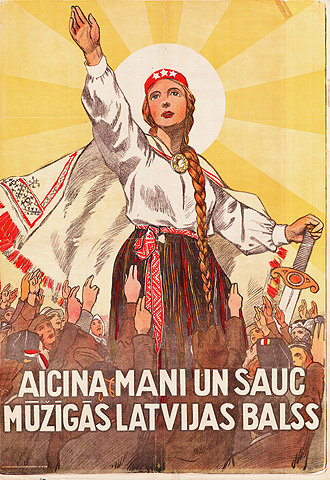
Wikipedia is announcing more discoveries
by the historian Dr. Rex Curry about the Soviet socialist
state's swastika. Although it was an ancient symbol, it was
used by socialists in modern times as S-symbolism for "socialism."
Dr. Curry's work is probably the most referenced historical
research on Wikipedia. http://rexcurry.net/ussr-socialist-swastika-cccp-sssr.html
The discoveries are shown in Soviet
Socialist banknotes that show swastikas. One of those notes
is a 250 ruble note. http://rexcurry.net/ussr-socialist-swastika1917-250a.JPG
The designer of that banknote
was an ethnic Latvian Rihards Zariņš (he spelled his
name: Zarriņš or Richarda Zarrina; June 27, 1869 – April 21,
1939). He studied at the School of Kurzeme Knighthood in
Griva and elsewhere in Latvia, St. Petersburg, and then in western
Europe in Berlin, Munich, and Vienna. he became employed by the
Russian Imperial Printing Office in St. Petersburg, where he worked
from 1899 to 1919, acting from 1905 on as technical director of
the Soviet Socialist State printing house, where the banknotes
were printed. Later he designed the first postage stamps of
the Soviet Socialist State.
In 1919 he returned to Latvia
and directed the Government Printing House (1919-1933) and
became a Professor serving as head of the graphic arts workshop
at the Latvian Academy of Arts (1921-1938). He created designs
of paper money, postage stamps, certificates and more.
He enjoyed the socialist symbolism of the swastika and he used it
frequently, as in the banknote mentioned.
Zarins also signed his work with a single large
stylized letter "Z" another reflection of his interest in alphabetic
swastika-style symbolism. Mākslinieks Rihards Zariņš http://rexcurry.net/swastika-Latvian-Richard-Zarrins-Rihards-Zarins-Zarrins.jpg
Zariņš Litogrāfija Rīga
Latvia also used swastikas on their war planes
and the swastika evolved to resemble the same swastika style
of Soviet Socialist and German Socialism (under the National Socialist
German Workers' Party). It is not clear if there was a relationship
to Zarins' work. However, the earlier swastikas on Latvian planes
used the Z-direction swastika, consistent with Zarins' signature on
his art, and the later Lativan planes used the the S-direction swastika,
consistent with Zarin's work under Soviet Socialism. http://rexcurry.net/fotw-flags-of-the-world-vexillology.html
In 1934, Zarins created a lithograph that
displays the stiff-armed salute (the American salute) that
had originated in the United States in the early Pledge of
Allegiance (written by the self-proclaimed national socialist
Francis Bellamy in 1892).
http://rexcurry.net/swastika-Latvian-Richard-Zarrins-Rihards-Zarins-Zarrins1934.jpg
The Latvian salute also resembles that of the Boy Scouts and
Girl Scouts. http://rexcurry.net/pledge-of-allegiance-scouting.html
Some of the spectators in the 1934 Zarins poster wear uniforms
in another ominous parallel to Boy Scouts and Girl Scouts.
Boy Scouts, Girl Scouts and Latvia shared an interest in similar
salutes and swastikas. http://rexcurry.net/fotw-flags-of-the-world-vexillology.html
http://rexcurry.net/north-american-vexillological-association-nava.html
http://rexcurry.net/laissezfaire.html
Among Zarins' works of applied art are the design
of the Latvian coat of arms, as well as several designs for
bank notes issued by the Printing Office, and several coins
of the Latvian lats.
It is sad to note that Zarins died in
1939, the same year that the National Socialist German Workers'
Party joined with the Union of Soviet Socialist Republics as
allies in a pact to divide up Europe, spreading World War II, and
the socialist Wholecaust (of which the Holocaust was a part): 62 million
slaughtered under the Union of Soviet Socialist Republics; 49 million
under the Peoples' Republic of China; 21 million under the National
Socialist German Workers' Party.
In 1940, Latvia was incorporated into
the USSR and Zarins' lats were replaced by the Soviet ruble.
The Soviet socialist state during the
time of its swastika was known as the "PCOCP" which,
with slight alteration, became simply "CCCP" (USSR or Union
of Soviet Socialist Republics). Transliterated it is known
also as the R.S.F.S.R., the Russian Soviet Federative Socialist
Republic (aka Russian Soviet Federated Socialist Republic)
(Росси́йская Сове́тская Федерати́вная Социалисти́ческая Респу́блика,
РСФСР).
It is relevant to note that the
Soviet socialist state's abbreviations have the pattern
of double letters in PP, CC and SS. Hence, the double S
letters of the Soviet socialist state's swastika stand for
"Soviet Socialist" (the corresponding letters in RSFSR).
The RSFSR began
in 1917 and was the largest and most populous of the
fifteen former republics of the Union of Soviet Socialist
Republics, which became known as the Union of Soviet Socialist
Republics in December 1922. The Russian SFSR became
the modern day Russia after the collapse of the USSR, officially
dissolved on December 31, 1991.
After the proclamation of the Republic
of Latvia in 1918, a large variety of different currencies
were in circulation including ostrubles and ostmarks (east
rubles, east marks), German reichsmarks, the so-called Tsar rubles
and kopecks, and the so-called Money of Duma.
On December 11, 1918, the Minister of
Finance set official exchange rates for the currencies in
circulation, thus recognizing three foreign currencies as
legal tender including Germany and the Union of Soviet Socialist
Republics.
On March 22, 1919, the Provisional Government
of Latvia authorized the Minister of Finance to issue the
first money notes of the Republic of Latvia - Treasury notes;
they were named Latvian rubles and Latvian kopecks, named after
the money in circulation under Soviet Socialism. Five Latvian artists
designed the money, including Rihards Zarins, who had designed
the soviet socialist swastika rubles under the Soviet Socialism
(the Russian Soviet Federated Socialist Republic). Issues of Treasury
notes marked the beginnings of an independent Latvian monetary system
although Russian and German currencies continued as legal tender
in Latvia.
In order to impose socialism, control
the economy, and inflate (counterfeit) money, the Constitutional
Assembly adopted the law to socialize money (as well as other
things) and imposed the Bank of Latvia on September 7, 1922. The
power to issue currency was seized and turned into a socialist monopoly
(along with many other things) and vested with the Bank of Latvia.
On November 2, 1922, the Bank of Latvia issued the first provisional
banknotes - 500-ruble notes with an overprint.
In 1923, 100-lats banknotes were issued.
The graphical design of the note was worked out by artists
Rihards Zarins and Karlis Krauze.
The Ministry of Finance issued State Treasury
notes in denominations of 5, 10 and 20 lats. These notes
were printed at the State Securities Printing House. The authors
of the graphical designs of these notes were Rihards Zarins,
Karlis Krauze and Harijs Gricevics.
Coins were issued in denominations of
1, 2 5, 10, 20 and 50 santims, and 1, 2 and 5 lats. The designs
of the coins were created by three artists: Rihards Zarins (santims
coins of the 1923 issue and 5-lats coins), Janis Roberts Tilbergs
(1- and 2-lats coins) and Ludolfs Liberts (santims coins, the 1937
issue).
It is sad to note that Zarins died in
1939, the same year that the National Socialist German Workers'
Party joined with the Union of Soviet Socialist Republics as
allies in a pact to divide up Europe, spreading World War II,
and the socialist Wholecaust (of which the Holocaust was a part):
62 million slaughtered under the Union of Soviet Socialist Republics;
49 million under the Peoples' Republic of China; 21 million under
the National Socialist German Workers' Party.
In 1940, Latvia was incorporated into
the USSR (Zarins' previous employer) and Zarins' lats were
replaced by the Soviet ruble. Latvia was occupied by the Soviet
Socialist Army on June 17, 1940, and on August 5 Latvia was incorporated
into the Union of Soviet Socialist Republics. Beginning with October
10, 1940, the Latvia Republican Office of the State Bank of the USSR,
which was a constituent part in the centralized Soviet socialist
banking system, took over the the Bank of Latvia. The USSR's monetary
system was gradually re-introduced in Latvia. With the resolution
of the Popular Council of Commissars of the Latvian SSR (Soviet Socialist
Republic) passed on November 25, 1940, the exchange rate of the lats
against the USSR ruble was determined (1 lats = 1 ruble). That marked
the beginning of a simultaneous circulation of two currencies in
Latvia, which lasted for four months. Without prior notice, the lats
was withdrawn from circulation on March 25, 1941. The USSR ruble became
the socialist monopoly legal tender in Latvia.
Latvians also refer to the symbols as Pērkonkrusts (Thunder
cross). The sign's name tells that it was associated with the most
powerful Latvian god Pērkons (Thunder). Another name for it is Ugunskrusts
(Fire cross).
In June 1941, German troops under the
National Socialist German Workers' Party advanced into Latvia.
Right after the entrance of the German socialist army, the
Bank of Latvia resumed its activity; however, the Bank did not
regain its right to issue currency. The occupation power implemented
a policy that was tailored specially for occupied countries, its aim
being the suppression and robbing of these countries, in keeping
with the socialist dogma as previously imposed under Soviet Socialism.
The instrument to achieve this was the introduction of a special currency
- reichsmarks. German socialist Reichsmarks circulated alongside Soviet
Socialist rubles, the exchange rate being 10 rubles = 1 reichsmark.
After the Second World War, Latvia was
again incorporated into the Soviet financial system. The State
Bank of the USSR (Gosbank) both issued money and functioned
as the State Treasury. The monetary system of the Latvian Soviet
Socialist Republic was entirely controlled by the Gosbank.
In 1987, the Latvia Republican Office
of the State Bank of the USSR was renamed the Latvia Republican
Bank of the State Bank of the USSR; however, it did not become
a central bank with the right to issue the national currency.
On March 2, 1990, the Supreme Council
of the Latvian SSR passed the Resolution "On the Bank of
Latvia". It stipulated that the Bank of Latvia, a local central
bank, was established (actually restored) in the Latvian SSR. This
was a central bank - an independent state bank, which had the exclusive
right to issue the national currency.
However, it was only after the declaration
of independence of the Republic of Latvia on May 4, 1990 and
the collapse of Soviet Socialism that in accordance with the
Resolution of the Supreme Council of the Republic of Latvia "On
Reorganization of Banks in the Territory of the Republic of Latvia"
passed on September 3, 1991 the Bank of Latvia was re-established
as the socialist monopoly bank of Lavia with its own socialist monopoly
money.
The amazing discoveries in Dr. Curry's
work have been discussed by members of the group Flags Of
The World, a well-known group in the field of vexillology (the
study of flags). Dr. Rex Curry's historical discoveries have been
recognized by members of Flags Of The World Group (FOTW) and members
of other vexillological groups. The acknowledgment occurred when the
president of the group conceded defeat in a scholarly debate challenge
about Dr. Curry's news-making work. http://rexcurry.net/fotw-flags-of-the-world-vexillology.html
The Flags of the World web site contained
an error. A fan of RexCurry.net wrote in to point out
an error on the Flags of the World web site that has caused
confusion among members of the North American Vexillological
Association. The error is at http://www.crwflags.com/fotw/flags/lv%5Eair.html
That web page attempts to provide
information about Latvia's Airforce Flag and Aircraft
Marking and shows a swastika symbol (45 degrees to the horizontal
and pointed clockwise) with the headline "1918-1940."
That seeming error caused some members of the North American Vexillological
Association to incorrectly believe that the symbol was always
45 degrees to the horizontal (as if in a diamond orientation).
One NAVA member said "I checked Latvia's Air Force markings 1918-1940
and found a red swastika on its point (as in the National Socialist
German Workers' Party) on white." A more searching review of
the links on that FOTW page shows that the swastika symbol on Latvian
planes originally was on its side (with horizontal orientation)
and not 45 degrees to the horizontal. It is unclear from FOTW, and the
links, when and why the change occurred in Latvia from 1918-1940.
A fan writes, "It is interesting to
note that a lot of the pictures available through the FOTW
reference are only illustrations and not photographs. One illustration
did note the change in the markings. Also interesting to note that
the planes seem to be German, mostly or exclusively? And that in
1920 they were being used against the Union of Soviet Socialist
Republics. There was also a response about Finland's use of the
swastika. Can anyone provide more information about when Finland
first used the symbol on its planes, why, and where the plane(s) came
from? Was it a German source also?"
As late as 1936, swastikas were put
on Avro Anson Airplanes.
http://rexcurry.net/avro-anson-american-swastika-germany-finland1936.JPG
It is additional proof of Dr. Curry's
work showing the use of the swastika as S-shapes for "socialism"
under Soviet Socialists, German Socialists, and in Latvia
and Finland, Great Britain, and that they all followed after
the United States of America. http://rexcurry.net/45th-infantry-division-swastika-sooner-soldiers.html
Also see http://rexcurry.net/theosophy-madame-blavatsky-theosophical-society.html
In Finland the swastika was used as
the official national marking of the Army between 1918
and 1944, and also of the Finnish Air Force at that time.
The swastika was also used by the Lotta Svärd organisation.
The blue swastika was the symbol used by the family of Swedish
Count Eric von Rosen, who donated the first plane to the Finnish
White Army during the Finnish Civil War. At that time, Rosen was
socialist in his philosophy and socialism was growing like a cancer
worldwide. Rosen's socialism grew too and, after the National Socialist
German Workers' Party was formed, Rosen altered his use of the
symbol to be the same as that of the National Socialist German Workers'
Party when Rosen became one of the founding members of Nationalsocialistiska
Blocket, a Swedish Socialist political party, that took advantage
of the overlapping S-shapes of the swastika. Rosen also gained a closer
connection to Germany when Hermann Göring married Carin von
Kantzow, whose sister was married to Rosen.
The National Socialist Bloc
was formed in the end of 1933. It was formed by the merger
of Nationalsocialistiska Samlingspartiet, Nationalsocialistiska
Förbundet and local national socialist units connected
to the advocate Sven Hallström in Umeå. Later
Svensk Nationalsocialistisk Samling merged into NSB. The leader
of the party was the colonel Martin Ekström. The party maintained
several publications, Landet Fritt (Göteborg), Vår
Kamp (Göteborg), Vår Front (Umeå), Nasisten (Malmö)
and Riksposten. NSB differentiated itself from other Swedish national
socialist groups due to its liaisons with the Swedish upper class.
It is interesting to note that Finland had
the choice to discontinue the use of a swastika as a prominent
national symbol at any point after 1933. It did not do so until
forced to do so by the Allies after the defeat of Germany. The fact
that the Finnish swastika was slightly visually different to the
German swastika seems like a minor possible excuse. The Finnish symbol
was sufficiently similar to the German swastika to share the same visual
identity and thus association - in trademark terms it was still 'passing
itself off' as the German National Socialist symbol and was still associated
with socialism in Finland. The Finns made no attempt to make it more
different.
Was anyone who wanted to use the swastika
as a prominent national symbol after that time "choosing" to
associate their nation with German socialism, just as the adoption
of the red star and hammer & sickle by governments and militia
post-war were choosing to associate themselves with Soviet socialism
and its atrocities?
The swastika in Finnish is "Hakaristi," which
in a more literal or phonetic translation is "hooked cross,"
similar to the German word "Hakenkreuz." It was a type of cross.
It became known as the "Von Rosen Cross" and that term is still
used sometimes today in Finland.
There was German involvement in the Finnish
Civil War (January-May 1918). The Hakaristi was used by the
German-allied Whites during that Civil War.
The swastika also appeared
in many Finnish medals and decorations. In wartime medals
of honor it was a visible element, first drafted by Akseli Gallen-Kallela
1918–19. In Germany and Austria at the same time period,
the swastika was also being used by socialist groups.
The hakaristi (Finnish) was seen often on
aircraft and armour, including Brewster Buffaloes, StuGs.
The hakenkreuz (German) decorated the planes
of Herman Kunz (plane: Albatross Jasta 7) and Paul Billik (Albatross
Jasta 12) and Werner Voss (Albatross). All three aircraft were
roughly contemporaneous - Spring, 1917. Raoul Lufberry of the Layfayette
Escadrille Americaine flew a swastika-marked SPAD VII in roughly
the same time period as well.
The Brewster Buffalo, or Brewster F2A, was
an American fighter plane that saw extensive service with
both Allied and Axis air forces during World War II. They were
successful in combat, especially in Finland where Brewster F2A
fighters saw their longest and most intensive service with the Ilmavoimat
(Finnish Air Force), during 1940-48.
American soldiers used the swastika as
their symbol early in World War I, and up to 1941, against
Germany. The symbol was used by Americans in the French Escadrille
Lafayette, by the 45th Infantry Divison, on Boeing P-12 planes.
http://rexcurry.net/45th-infantry-division-swastika-sooner-soldiers.html
Up to June 1941, the Union of Soviet Socialist
Republics was as closely allied to the National Socialist
German Workers Party as the Finns were in 1939-40. After
Barbarossa, the Soviet Socialist leader (Stalin) judged it much
better to maintain his agreement with Finland: there was
no advantage to Soviet Socialists acquiring another active enemy
north of Leningrad.
German Socialists received oil and food
from Soviet Socialists. The National Socialist German Worker'
Party and the Union of Soviet Socialist Republics were allies
in 1939 when they jointly attacked Poland as part of a larger
pact (Molotov-Ribbentrop) to divide up Europe. The Soviet Socialist
Navy escorted a German raiding ship to the Pacific via Siberia and
the Bering Strait. Soviet Socialists opposed Lend-Lease in
the U.S. and preached collaboration in Nazi-Sozi occupied Europe.
In Barbarossa, Finland allowed tens of thousands
of German troops to deploy secretly in Finland, and that gave
the USSR a casus belli. Before Barbarossa, Finland had already
agreed to join the German Socialist attack. German troops were
deploying in Finland. Soviet Socialists pre-emptively attacked
before any attack was made from Finnish territory, but the Axis/Finnish
attack was coming regardless. Stalin had no choice about acquiring
another active enemy north of Leningrad.
By 1944, the 1940 settlement was a dead
letter. It no longer influenced either country as such; that
is, the Finns and Soviets both agreed to the settlement of
1944 on the basis of the facts of battle at the time, not whether
the new settlement matched the 1940 settlement.
In conclusion, it is interesting to note
that Finland used the hakaristi as a symbol when Germany was
allied with a country attacking Finland, and blocked aid to Finland.
Finland continued to use the symbol when Finland was a co-belligerant
with Germany against the same country. Finland continued to use
the symbol when it was actively at war with Germany
The switch from the hakaristi to the white/blue/white
roundel was officially dated to April 1, 1945 - slightly
before the end of the war but effectively post-war so far as
the Finns were concerned (though the official peace treaty didn't
follow until February, 1947). The change was at the insistance
of the the Allied Control Commission (it was not happy with the
Finnish hakaristi symbol).
The NAVA members who referenced the FOTW
web page provided more support for Dr. Curry's work showing
that the swastika was used to represent overlapping "S" letters
for "socialism" under the National Socialist German Workers'
Party and in the Soviet Socialist State. http://rexcurry.net/book1a1contents-swastika.html
Mākslinieks Rihards Zariņš http://rexcurry.net/swastika-Latvian-Richard-Zarrins-Rihards-Zarins-Zarrins.jpg
Zariņš Litogrāfija Rīga
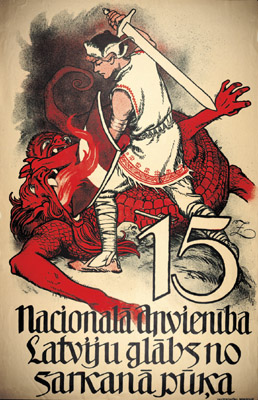
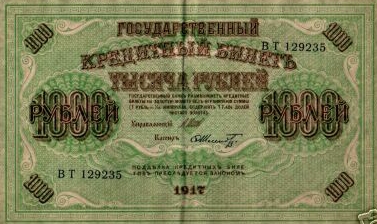
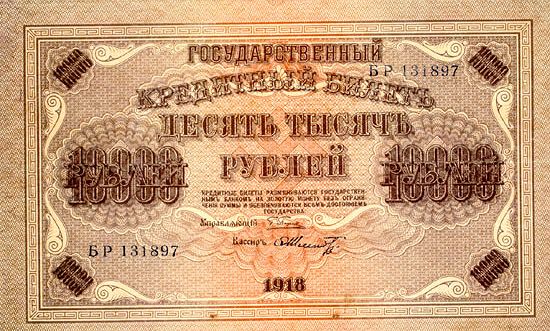
dated 1918 ruble of 5000 and 10000
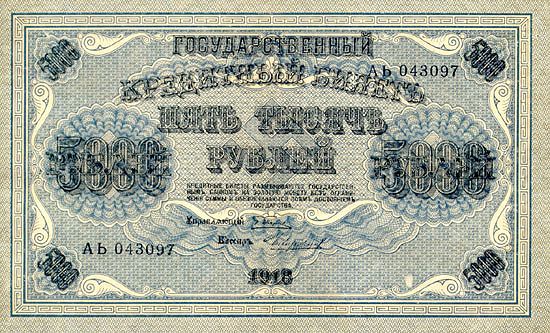
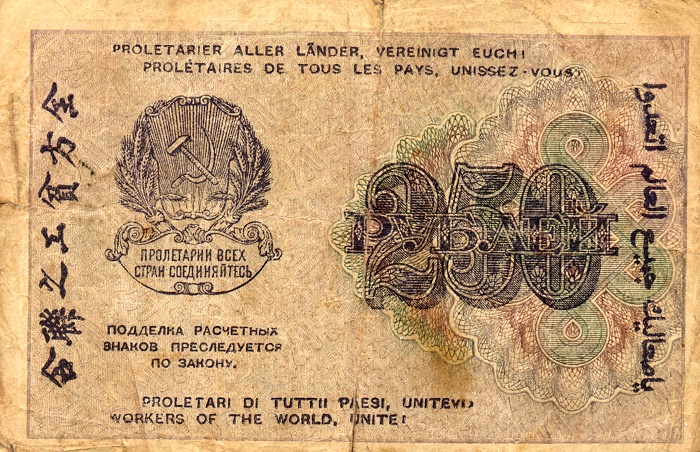
Notice how
the Socialist Repubics utilized various languages
(including German at the top) in an effort to spread sickly
socialism worldwide, and consistent with its use of
alphabetic "S" symbolism in its swastika symbol.
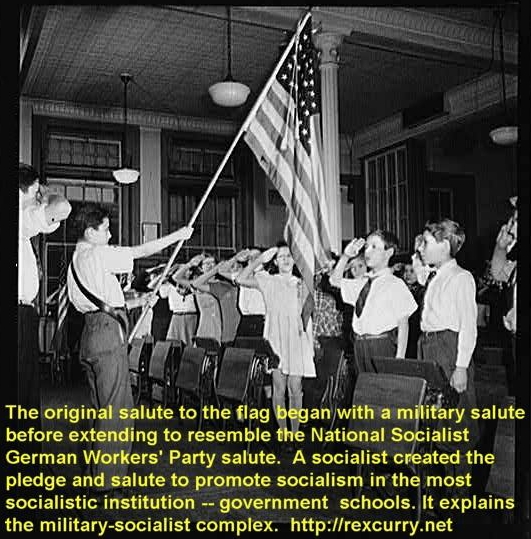


Pledge Of Allegiance

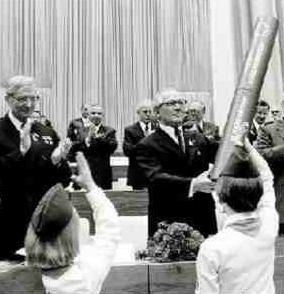

Girl Scouts and Boy Scouts spread
the flag fanaticism and military socialism worldwide.
http://rexcurry.net/pledge-of-allegiance-scouting.html
The
Red, White and Blue
color scheme was borrowed
from the United States
along with the flag fetishism and extended military
salute for children.
http://rexcurry.net/girl-scouts-young-pioneers-ddr-east-germany.jpg

http://rexcurry.net/ussr-soviet-union-young-pioneers.jpg
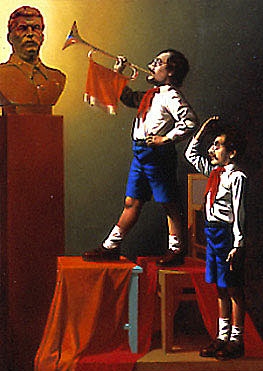
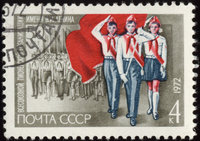
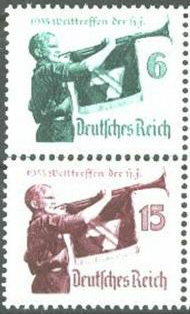
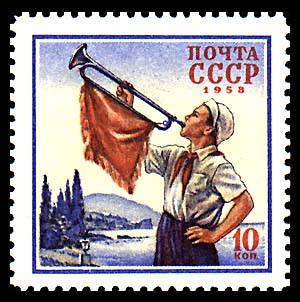
http://rexcurry.net/scouting-russia-red-square-moscow2007.jpg
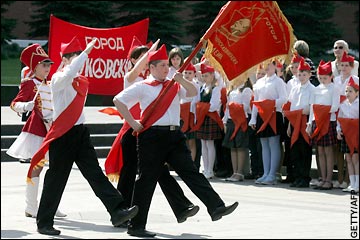
http://rexcurry.net/girl-scouts-young-pioneers-russia2000.JPG
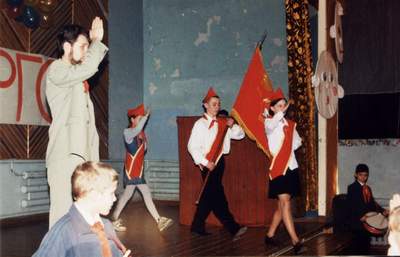
http://rexcurry.net/girl-scouts-campfire-young-pioneers-scouting.jpg
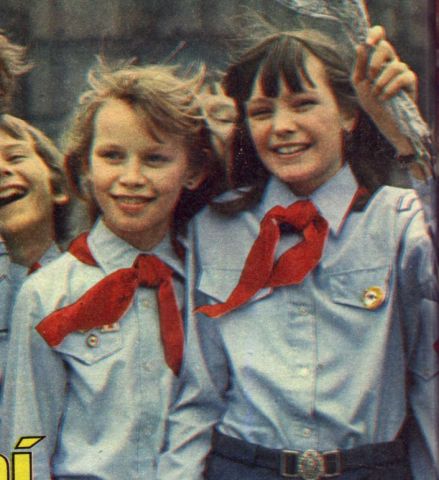
http://rexcurry.net/girl-scouts-young-pioneers-scouting.jpg
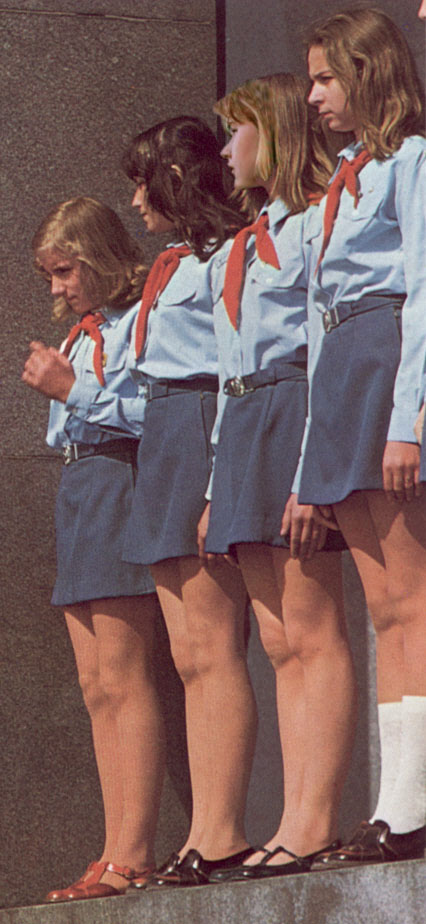
http://rexcurry.net/young-pioneers-czech-republic-girl-scouts.jpg

http://rexcurry.net/young-pioneers-czech-republic.jpg
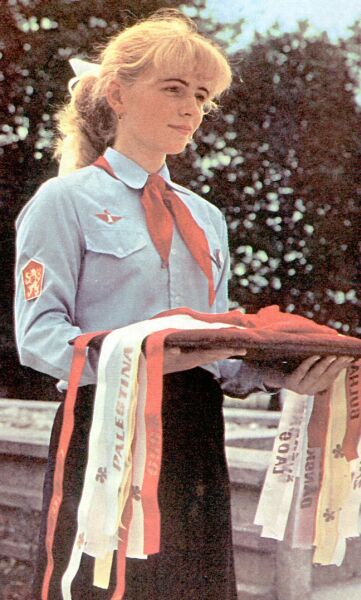
http://rexcurry.net/young-pioneers-girls-ussr-socialism.jpg

Pledge Of Allegiance
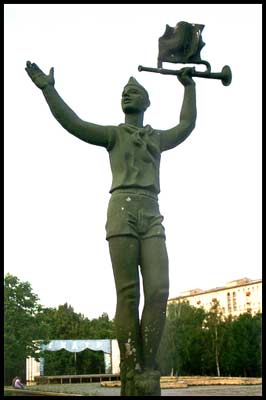
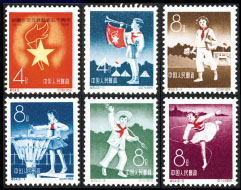
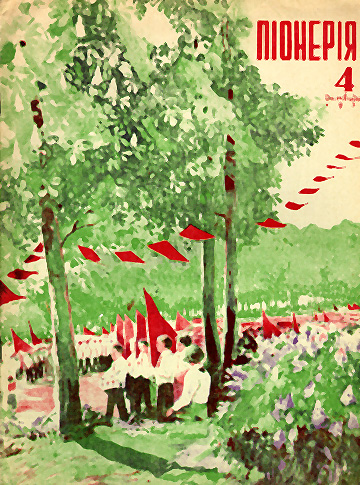
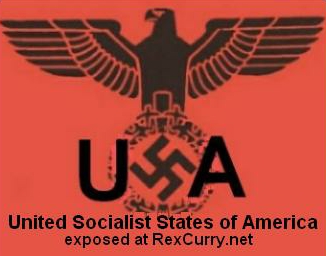
USSA United Socialist
States of America
USSR Union of Soviet
Socialist Republics

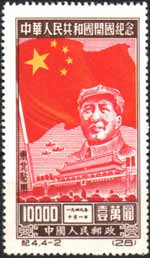
Pledge of
Allegiance photograph http://rexcurry.net/nazi-salute-taipei-times-roc-republic-of-china-government-officials-sworn.jpg

Pledge of Allegiance photograph
http://rexcurry.net/nazi-salute-taipei-times-roc-republic-of-china-government-officials-sworn.jpg
http://rexcurry.net/vietnam-ho-chi-minh-city-commemorating.jpg

http://rexcurry.net/vietnam-ho-chi-minh-city-commemoration2.jpg
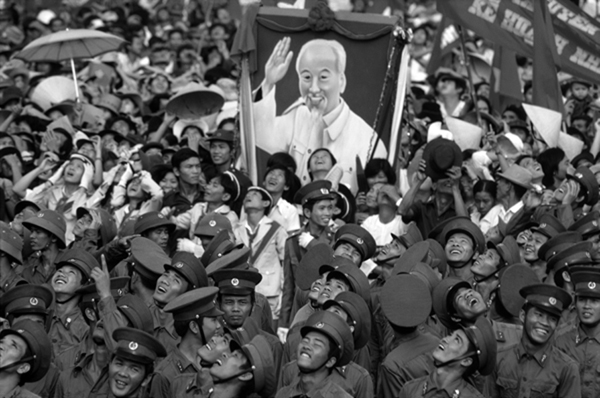
http://rexcurry.net/triumph-of-the-will-arirang-korea.jpg
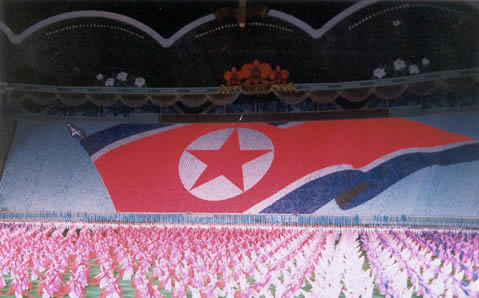
http://rexcurry.net/ussr-stalin-nazi-salute.jpg
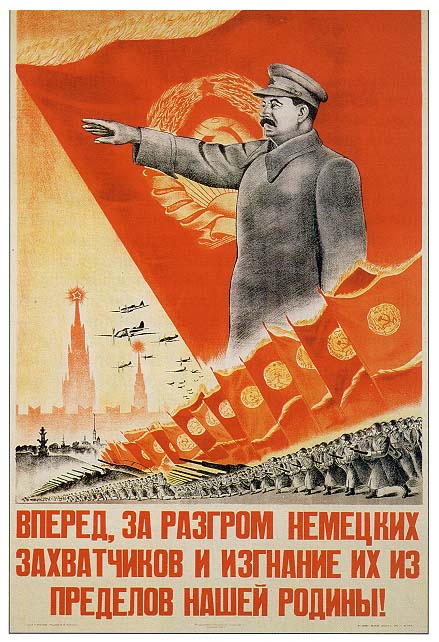
http://rexcurry.net/ussr-stalin-voroshilov-rkka-salute-military-parade.jpg
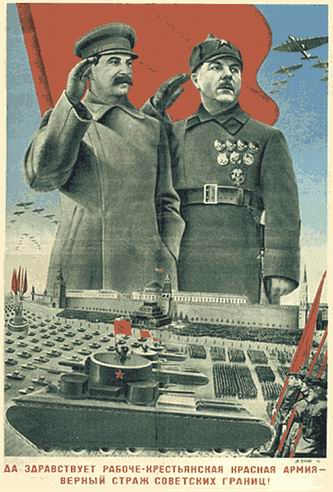
American salute goes to USSR & Lenin http://rexcurry.net/ussr-lenin-nazi-salute1931-airships.jpg

Lenin poster 1931 using American salute http://rexcurry.net/ussr-lenin-nazi-salute1931-airships.jpg
http://rexcurry.net/salute-albanian-teacher-to-russian-officers-kosovo-mitrovitsa1942.jpg
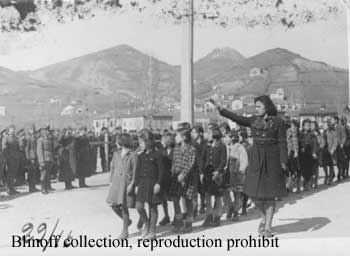
Swastika http://rexcurry.net/ussr-germany50reichspfennig1939-45.jpg
Swastika
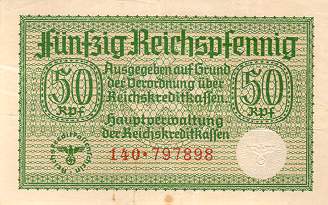
Swastika http://rexcurry.net/ussr-germany50reichspfennig1939-45.jpg
Swastika
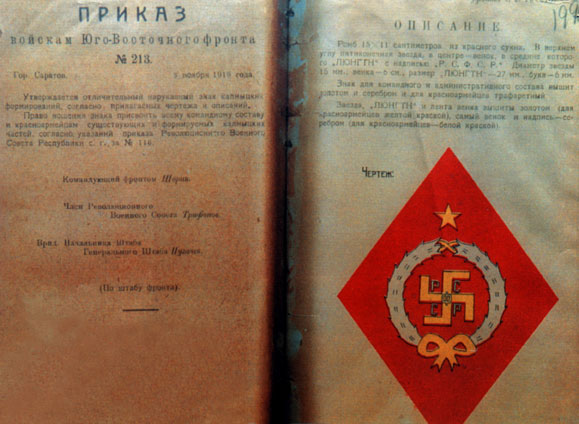
More evidence
proves the work of the historian Dr. Rex Curry in showing
that the swastika was used as alphabetic symbolism for
"socialism" by both the Union of Soviet Socialist Republics
and by the National Socialist German Workers' Party, as
shown in the images above and below and at
http://rexcurry.net/ussr-socialist-swastika-cccp-sssr.html
In 1917, socialism
was imposed in Russia when the former Union of
Soviet Socialist Republics (USSR) was formed after the
Russian Revolution of 1917, and the Russian Civil War
of 1918-1920. The propaganda machinary introduced
a new symbol for the new government: the swastika.
The Soviet Socialist
Swastika shows lettering around the swastika symbol
and also shows the swastika as two separate arms pointing
clockwise, representing separate "S" letters overlapping
http://rexcurry.net/ussr-socialist-swastika1919-1920cav.jpg
There is also a Red Army shoulder patch with the
swastika on it that was used during the Russian Civil War after
the Bolshevik Revolution .
http://rexcurry.net/ussr-socialist-swastika1919-1920cav-red-army-prikaz.jpg
The Soviet swastika
was so popular that paper money printed in the
years 1917 and 1918 carried large swastikas in the
center of the bills.
http://rexcurry.net/ussr-socialist-swastika1917-250b.JPG
Soviet socialist
money openly used English, German and other languages
in an effort to spread sickly socialism worldwide, consistent
with its use of alphabetic "S" symbolism in its swastika
symbol. http://rexcurry.net/ussr-socialist-swastika1919-1920rubles250.jpg
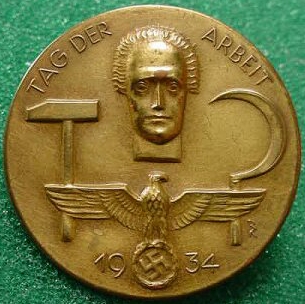 On official
badges, the Soviet Swastika was yellow on a red background,
mimicking the other socialist symbol, the hammer and
sickle (Russian: серп и молот, "serp i molot" (serpent &
mallet?)), a symbol that also developed in the Russian Soviet
Federated Socialist Republic (RSFSR). Eventually, the national
flag mimicked the same color schemes and symbols. The swastika
was even displayed with the hammer and sickle http://rexcurry.net/swastika4.gif
as shown here http://rexcurry.net/ussr-socialist-swastika-may-day.jpg
On official
badges, the Soviet Swastika was yellow on a red background,
mimicking the other socialist symbol, the hammer and
sickle (Russian: серп и молот, "serp i molot" (serpent &
mallet?)), a symbol that also developed in the Russian Soviet
Federated Socialist Republic (RSFSR). Eventually, the national
flag mimicked the same color schemes and symbols. The swastika
was even displayed with the hammer and sickle http://rexcurry.net/swastika4.gif
as shown here http://rexcurry.net/ussr-socialist-swastika-may-day.jpg
Germany's socialist swastika had
the same meaning as the earlier Soviet Swastika and the
Hammer and Sickle: The German and Soviet swastikas were two
"S" letters that represented socialists joining together;
the hammer and sickle represented socialists joining together,
particularly workers joining with peasants, or factory workers
joining with agricultural workers.
The German term for "swastika"
is "Hakenkreuz" ("hooked cross") because the symbol represented
two separate pieces crossed (two "S" shaped pieces).
In Mein Kampf, the German socialist
leader referred to the socialist swastika and the flag:
"In red we see the social idea of the movement, in white the
nationalistic idea, in the swastika the mission of the struggle
for the victory of the Aryan man, and, by the same token, the
victory of the idea of creative work..." (pg. 496-497). In German
the swastika reference was: "im Hakenkreuz die Mission des
Kampfes für den Sieg des arischen Menschen und zugleich mit
ihm auch den Sieg des Gedankens der schaffenden Arbeit,"
In his own words, Hitler stated
that the swastika referred to work (labor) and mimicked
the Soviet's "new" swastika replacement, the Hammer and Sickle
(two tools of workers). Hitler states that the Hakenkreuz (hooked
cross) represents two crossed "S" shapes known as "sieg" symbols.
Those "S" letters were used for "S" in other German socialist
symbolism. He made overlapping use of the word "victory" or "sieg"
in German. The red color and the "social idea of the movement"
ties into socialism for which Hitler claimed the National Socialist
German Workers' Party was struggling for victory. The so-called "swastika"
represented two "S" letters for "socialism" and is related to "Sieg
Heil!" in the sense of the NSGWP's cry of "Hail to the Victory
of Socialism!" His use of the term "arischen"
mimicks the Soviet swastika and the Soviet hammer and sickle in the
effort to glorify workers (represented by their tools in the hammer
and sickle) as the new super soviet socialist men.
http://rexcurry.net/george-bernard-shaw-superman-socialist-swastika-socialism.html
German socialists were heavily
influenced by earlier Soviet socialists, even in regard
to concentration camps, purges, and genocide.
In 1939, the Union of
Soviet Socialist Republics and the National Socialist
German Workers’ Party joined as allies to invade Poland
in a Pact to divide up Europe, spreading WWII. http://rexcurry.net/socialists.html
They USSR embraced the
swastika symbol even more then, and the hammer and
sickle was displayed proudly next to and in partnership with
the socialist swastika.
The lettering
around the socialist swastika badge resembles "PCOCP"
which, with slight alteration, became simply "CCCP" (USSR).
The lettering and the swastika symbol refer to
the R.S.F.S.R., the Russian Soviet Federative Socialist Republic
(aka Russian Soviet Federated Socialist Republic) (Росси́йская
Сове́тская Федерати́вная Социалисти́ческая Респу́блика,
РСФСР). The socialist swastika badge uses the pattern
of double letters in PP, CC and SS. Hence, the double S letters
of the soviet socialist swastika stand for "Soviet Socialist"
(the corresponding letters in RSFSR).
The RSFSR began
in 1917 and was the largest and most populous of the
fifteen former republics of the Union of Soviet Socialist
Republics, which became the Union of Soviet Socialist
Republics in December 1922. The Russian SFSR became
the modern day Russia after the collapse of the USSR, officially
dissolved on December 31, 1991.
The USSR followed
the lead of socialists in the USA, and also in the
use of the swastika as a symbol for socialism. http://rexcurry.net/theosophy-madame-blavatsky-theosophical-society.html
The USSR followed
the lead of the USA in beginning with a "federation"
name and then changing to a "Union" (a word that can be
translated also as "United") and even echoing the "U.S." initials.
The USSR was influenced by the socialist trend in the
USA and by its internationally famous socialists, including
Edward Bellamy.
Through the work
of socialists in the USA, the USSR, and Germany
respectively, the swastika became a global symbol of
socialism.
In 1939, the Union
of Soviet Socialist Republics joined as allies with
the National Socialist German Workers’ Party to invade
Poland in a Pact to divide up Europe, spreading WWII. It occurred
under the notorious Molotov-Ribbentrop Pact, which the
Socialist Republics never renounced. Seven million died
in Poland. As a result of the War, Finland had its Karelian Peninsula
torn away by the Socialist Republics and 10 countries Latvia,
Lithuania, Estonia, Poland, Czechoslovakia, East Germany,
Romania, Bulgaria, Hungary and Yugoslavia suffered under
the Socialist Republics for half a century. http://rexcurry.net/socialists.html
Even
after WWII, Soviet Socialists adopted the swastika
style symbolism of the German Trabant Sachsenring
car. http://rexcurry.net/trabant-sachsenring-rex-curry.html
Three common abbreviations
(USSR, SSSR, CCCP) refer to a self-described socialist
entity that used the word "socialist" in its name, as
did the NSDAP (National Socialist German Workers' Party)
which used the double "S" letters of the Hakenkreuz - swastika.
Russian socialists used symbolism and the word "socialist"
in their group's name, before the German socialists and
it served as an example. http://rexcurry.net/bookchapter4a1c.html
CCCP led to the
derisive joke that it signified the "coalition of
collectivist crusaders for the proletariat."
It also inspired the old gag of someone asking which "C"
stood for "Communist." Of course, the abbreviation
did not refer to communism, it referred to socialism,
as did the abbreviation and symbol for the National Socialist
German Workers' Party. http://rexcurry.net/bookpic-socialism-cccp-ussr.gif
Translated:
RSFSR was: Russian
Soviet Federated Socialist Republic
USSR was:
Union of Soviet Socialist Republics
Transliterated:
РСФСР was: Rossi?yskaya
Sovetskikh Federati?vnaya (or Soyuz) Sotsialisticheskikh
Respublika (RSFSR).
CCCP was: Soyuz
Sovetskikh Sotsialisticheskikh Respublik (SSSR).
CCCP is actually
cyrillic. In Latin letters it would be SSSR: Soyuz
Sovetskikh Sotsialisticheskikh Respublik (Soviet United/Federated
Socialistic Republic). Untransliterated it was CCCP,
and transliterated it was SSSR.
In Russian:
РСФСР was Росси́йская
Сове́тская Федерати́вная Социалисти́ческая Респу́блика.
CCCP was Сою́з Сове́тских Социалисти́ческих Респу́блик.
Another explanation:
РСФСР was Росси́йская
Сове́тская Федерати́вная Социалисти́ческая
Респу́блика.
Soviet
Socialist
Republic / Republics
CCCP was Сою́з
Сове́тских
Социалисти́ческих
Респу́блик.
Translation of the left side:
ORDER
to troops of South-Eastern
front
# 213
City of Saratov
<date> November 1919
A shoulder patch is approved
for Kalmyk units, according to the attached drawing and description.
The right to wear this patch
is given to officers and Red Army privates of existing Kalmyk
units, as well as the ones being raised, according to order of
the Revolutionary Military Council of the Republic, this year, #
11<6>.
(There follow the signatures of the front commander,
the Member of the Revolutionary Military Council (the commissar)
and chief of staff. The right side gives a description and picture.
Dimitri Volkogonov "Lenin - A New Biography", page 8. ISBN
0-02-933435-7 "Lenin's antecedents were Russian, Kalmyk, Jewish, German and Swedish, and possibly
others".
|
Свастика в
Красной армии
Кавалерия, Юго-Восточного
фронт 1919-20 г.г.:
Swastika in
the Red Army
Cavalry South-Eastern
Front 1919-20 g.g.:
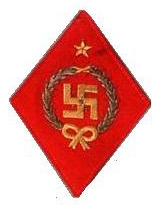
"according to
the communication V.O. Of daynesa, in the central
Public Archive of the Soviet Army is an application to
the order to the forces of southeastern Front № 213 in 1918,
where is described new emblem for the personnel: "the rhomb
of yshchkhyy of centimeters from the red cloth. In the upper
angle pentagonal star, in the center - venok, in middle of which
"LYUNGTN" with the inscription "R.S.F.S.R.". Stellar diameter
15 mm, Viennese 6 cm, size OF "LYUNGTN" - 27 mm, letters - 6 mm.
sign for the command and administrative personnel are embroidered
by gold and silver, also, for the Red Army men stereotyped. Star,
"LYUNGTN" and tape Viennese are embroidered by gold (for the Red
Army men by yellow paint), venok itself and inscription - by silver
(for the Red Army men - by white paint)." [The
mysterious abbreviation OF "LYUNGTN" designated the here being untwisted
swastika.
Novel Of bagdasarov
"The swastika: the sacred symbol."
(it sent Aleksandr)]
"По сообщению В.О. Дайнеса, в Центральном государственном
архиве Советской Армии имеется приложение к приказу
войскам Юго-Восточного фронта № 213 за 1918 г., где описана
новая эмблема для личного состава: "Ромб 15х11 сантиметров
из красного сукна. В верхнем углу пятиконечная звезда, в центре
- венок, в середине которого "ЛЮНГТН" с надписью "Р.С.Ф.С.Р.".
Диаметр звезды 15 мм, венка 6 см, размер "ЛЮНГТН" - 27 мм, букв
- 6 мм. Знак для командного и административного состава вышит золотом
и серебром и для красноармейцев трафаретный. Звезда, "ЛЮНГТН"
и лента венка вышиты золотом (для красноармейцев жёлтой
краской), самый венок и надпись - серебром (для красноармейцев
- белой краской)." [Загадочной аббревиатурой
"ЛЮНГТН" обозначена здесь раскручивающаяся свастика.
Роман Багдасаров "Свастика:
священный символ." (прислал Александр)]
1918 - 1919, when
Vasiliy Ivanovich Shorin (Colonel, punished in the
30's) commanded the Red Army at the southeastern Front
1918 - 1919 годах,
когда Красной Армией на Юго-восточном фронте командовал
Василий Иванович Шорин (полковник, репрессированный
в 30-е годы)
Swastika in
the army OF USA 45-4 infantry division:
The soldiers of 45-1
infantry division OF THE USA bore on the left sleeve
the symbol of yellow on the red rhomb:
Свастика в
армии США
45-я пехотная
дивизия:
Военнослужащие 45-й
пехотной дивизии США носили на левом рукаве древний
символ, желтого цвета
на красном ромбе:
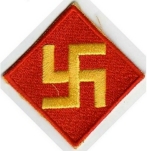
Read about
the 45th Infantry Division Sooner soldiers at http://rexcurry.net/45th-infantry-division-swastika-sooner-soldiers.html
Polish army,
the 20's emblem on the collar Of podkholyanskikh strelkov:
Element of 250
ruble notes. Russia 1917:
Польская армия,
20-е годы
Эмблема на
воротнике Подхолянских стрелков:
Элемент 250
рублевой купюры. Россия 1917 год:
http://www.ostfront.ru/Soldatenheim/Swastika.html
TRANSLATIONS:
http://babelfish.altavista.digital.com/tr
Joseph Stalin, Mao Zedong, Adolf Hitler http://rexcurry.net/socialism-red-flags-socialists1c.jpg
Joseph Stalin, Mao Zedong, Adolf Hitler

Joseph Stalin, Mao Zedong, Adolf Hitler http://rexcurry.net/socialism-red-flags-socialists1c.jpg
Joseph Stalin, Mao Zedong, Adolf Hitler
A new documentary video movie exposes the shocking
facts on youtube
http://www.youtube.com/watch?v=BssWWZ3XEe4
and here http://rexcurry.net/pledge-of-allegiance-rexcurrydotnet.wmv
and on google video
http://video.google.com/videoplay?docid=-5557748653154009373&hl=en
http://video.google.com/videoplay?docid=-4377628546479871943
Joseph Stalin, Mao Zedong, Adolf Hitler http://rexcurry.net/socialists.jpg
Joseph Stalin, Mao Zedong, Adolf Hitler
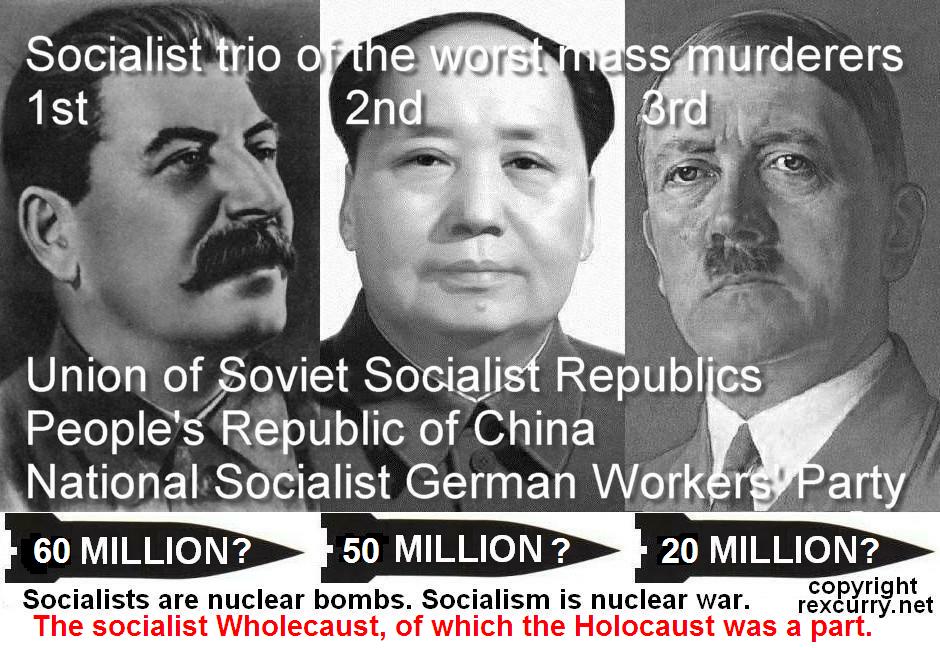
Joseph Stalin, Mao Zedong, Adolf Hitler http://rexcurry.net/socialists.jpg
Joseph Stalin, Mao Zedong, Adolf Hitler
PLEDGE OF ALLEGIANCE http://rexcurry.net/pledge-allegiance-pledge-allegiance.jpg
FRANCIS BELLAMY
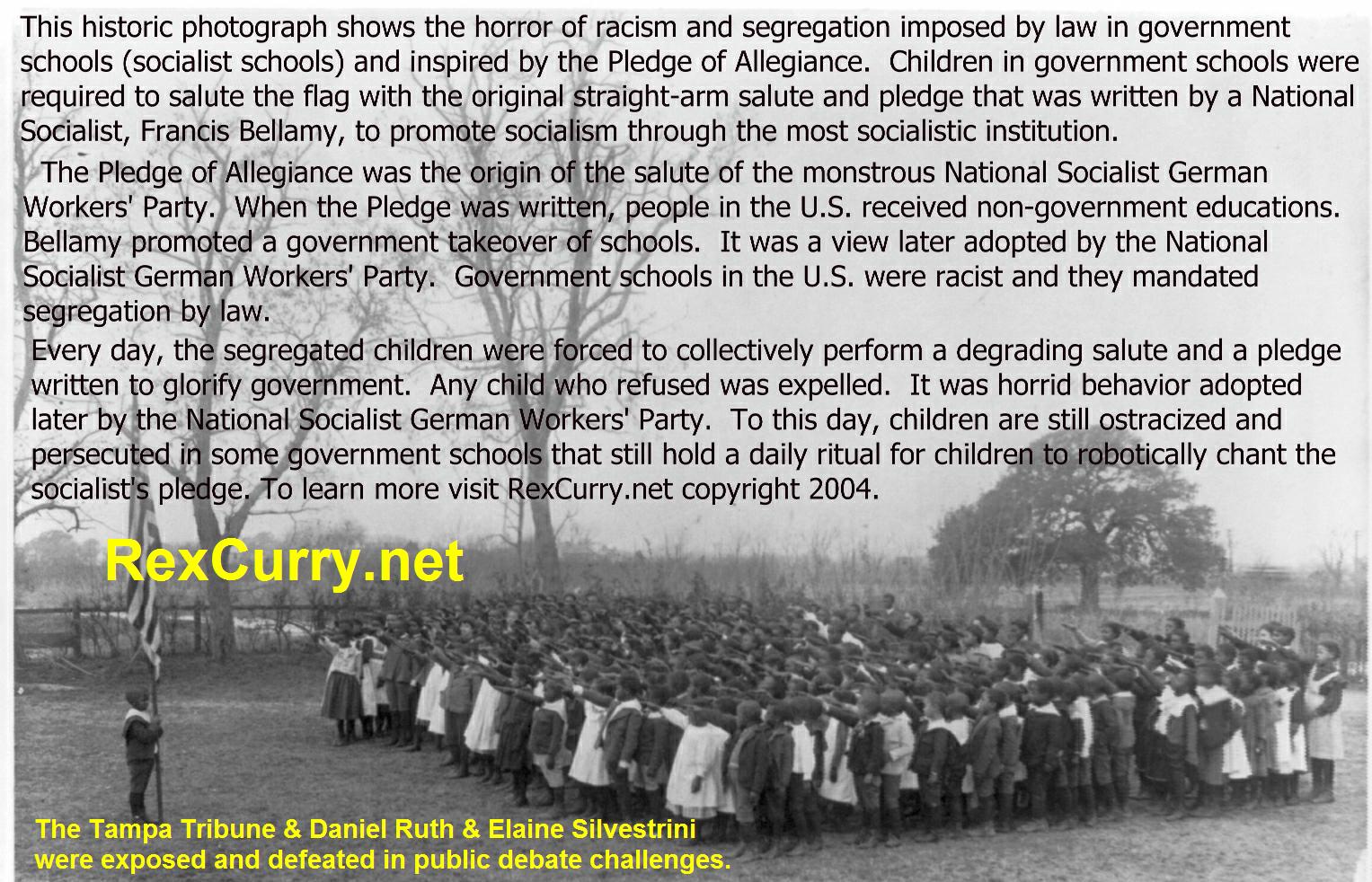
PLEDGE OF ALLEGIANCE http://rexcurry.net/edward%20bellamy.jpg
EDWARD BELLAMY
SWASTIKA http://rexcurry.net/swastika3clear.jpg
SWASTIKA
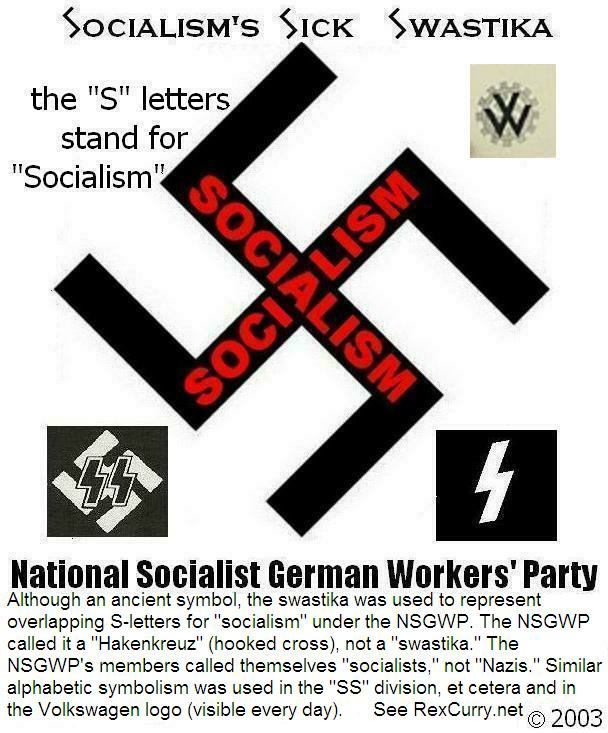
SWASTIKA http://rexcurry.net/swastika3clear.jpg
EDWARD BELLAMY
Rex Curry blog spot http://rexcurry.blogspot.com/
Pledge of Allegiance blog spot http://pledge-of-allegiance.blogspot.com/
Pledge Allegiance blog spot http://pledge-allegiance.blogspot.com/










































 On official
badges, the Soviet Swastika was yellow on a red background,
mimicking the other socialist symbol, the hammer and
sickle (Russian: серп и молот, "serp i molot" (serpent &
mallet?)), a symbol that also developed in the Russian Soviet
Federated Socialist Republic (RSFSR). Eventually, the national
flag mimicked the same color schemes and symbols. The swastika
was even displayed with the hammer and sickle http://rexcurry.net/swastika4.gif
as shown here http://rexcurry.net/ussr-socialist-swastika-may-day.jpg
On official
badges, the Soviet Swastika was yellow on a red background,
mimicking the other socialist symbol, the hammer and
sickle (Russian: серп и молот, "serp i molot" (serpent &
mallet?)), a symbol that also developed in the Russian Soviet
Federated Socialist Republic (RSFSR). Eventually, the national
flag mimicked the same color schemes and symbols. The swastika
was even displayed with the hammer and sickle http://rexcurry.net/swastika4.gif
as shown here http://rexcurry.net/ussr-socialist-swastika-may-day.jpg




